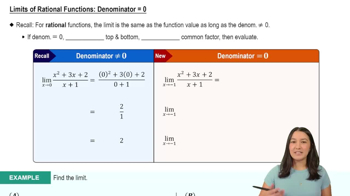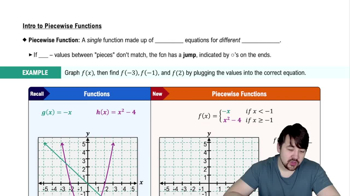Using the Formal Definition
Prove the limit statements in Exercises 37–50.
limx →4 (9 − x) = 5
 Verified step by step guidance
Verified step by step guidance Verified video answer for a similar problem:
Verified video answer for a similar problem:



 6:47m
6:47mMaster Finding Limits Numerically and Graphically with a bite sized video explanation from Patrick
Start learning